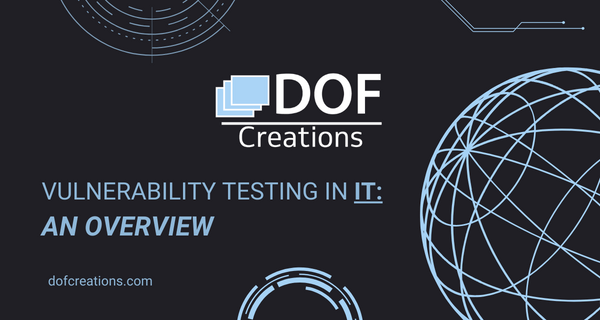What is Vulnerability Testing?
In the realm of cybersecurity, staying one step ahead of potential threats is crucial for maintaining the integrity of any organization. One important way of achieving this is through vulnerability testing. Vulnerability testing, also known as vulnerability assessment, is a process that involves identifying, quantifying, and prioritizing the vulnerabilities in a system, network, or application. It helps organizations to identify security weaknesses before a hacker does, and take necessary corrective measures to prevent unauthorized access or data breaches.
How is Vulnerability Testing Implemented and Utilized?
The implementation and utilization of vulnerability testing involve a series of well-defined steps:
Define the Scope: The first step is to define the scope of the assessment. This involves identifying the systems, networks, and applications that need to be tested.
Gather Information: The next step is to gather as much information as possible about the target systems. This includes information about the network structure, operating systems, and applications.
Identify Vulnerabilities: This involves using various tools and techniques to identify the vulnerabilities in the target systems. This may include automated scanning tools as well as manual testing.
Assess the Impact: Once the vulnerabilities are identified, the next step is to assess the impact of these vulnerabilities. This involves determining the potential damage that could be caused if the vulnerabilities are exploited.
Prioritize Vulnerabilities: Not all vulnerabilities are created equal. Some may pose a higher risk than others. Therefore, it is important to prioritize the vulnerabilities based on their potential impact and the likelihood of exploitation.
Remediate Vulnerabilities: The next step is to remediate the identified vulnerabilities. This may involve applying patches, changing configuration settings, or implementing additional security controls.
Report: Finally, a detailed report is prepared that outlines the findings of the assessment, the potential impact of the identified vulnerabilities, and recommendations for remediation.
What Are the Most Important Components of Vulnerability Testing?
Scanning Tools: These are automated tools that scan the network, systems, and applications for known vulnerabilities. Examples include Nessus, OpenVAS, and Nexpose.
Manual Testing: This involves manually testing the target systems for vulnerabilities that may not be detected by automated scanning tools. This may involve techniques such as penetration testing.
Vulnerability Database: This is a database of known vulnerabilities that is used to identify potential vulnerabilities in the target systems. Examples include the National Vulnerability Database (NVD) and the Common Vulnerabilities and Exposures (CVE) database.
Risk Assessment: This involves assessing the risk associated with each identified vulnerability. This includes determining the potential impact and the likelihood of exploitation.
Remediation: This involves taking necessary corrective measures to address the identified vulnerabilities. This may involve applying patches, changing configuration settings, or implementing additional security controls.
DOF’s Thoughts
Vulnerability testing is an essential component of any cybersecurity program. It involves identifying, assessing, and remediating vulnerabilities in systems, networks, and applications. Key components of vulnerability testing include scanning tools, manual testing, a vulnerability database, risk assessment, and remediation. Implementing a comprehensive vulnerability testing program can help organizations identify and address security weaknesses before they can be exploited by attackers.
We are specialists and experts in implementing vulnerability testing for all types of organizations. We have a team of experienced professionals who have successfully conducted vulnerability assessments for various organizations across different industries.
We understand the unique challenges faced by each organization and customize our approach to meet their specific needs.
Contact us today to learn how we can help your organization implement a comprehensive vulnerability testing program and secure your sensitive data and applications.



